被忽视的真相 | 细胞亚群内互作
被忽视的真相 | 细胞亚群内互作
作者 | 周运来
最近在一个单细胞会议上听老师的报告,讲到细胞间相互作用(cell–cell interactions),觉得挺有意思。结合自己做单细胞数据分析的经验,有不成熟的想法,这可能是当下众多细胞间相互作用算法没有重点讨论的,那就是:细胞亚群内的相互作用/通讯。
概览现有单细胞互作软件的开发思路,我们不难发现,细胞互作工具往往是用配受体对在亚群内表达量作为衡量相互作用的强弱。细胞通讯算法的标配是有个通讯数据库(如配受体) 加一个 定量配受体表达的算法。
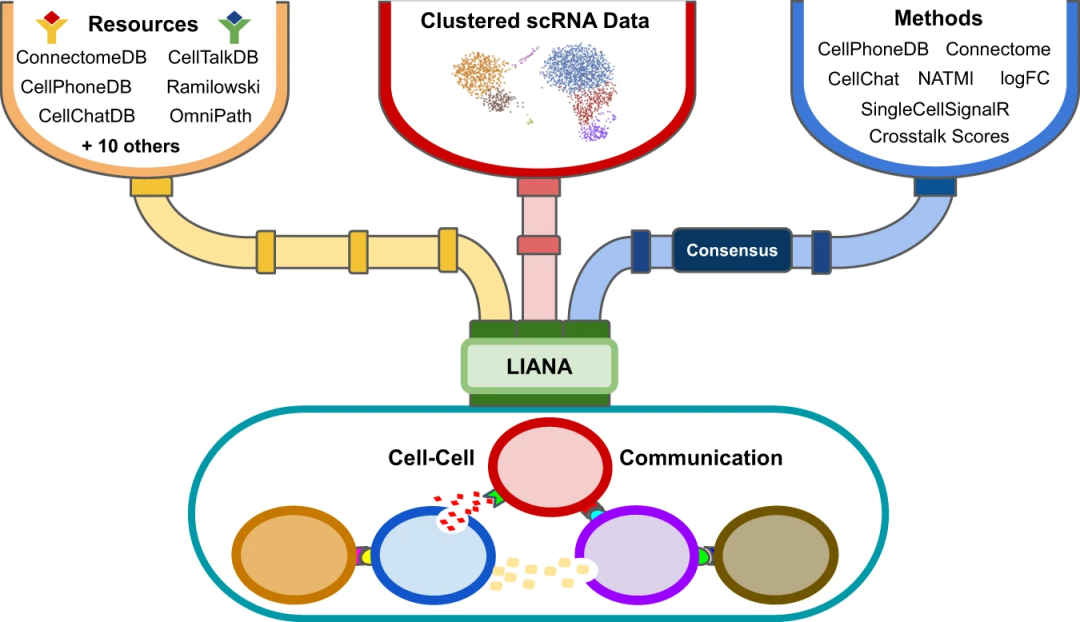
@LIANA
这些工具的开发为我们理解细胞通讯提供了新的视角和独特的契机,可以归纳为以下几个方面:
- 如何定量细胞通讯
- 细胞通讯的有无与多少
- 为什么会有这些通讯,级联反应(转录因子与通路)
- 通讯的方向性/及时性/媒介
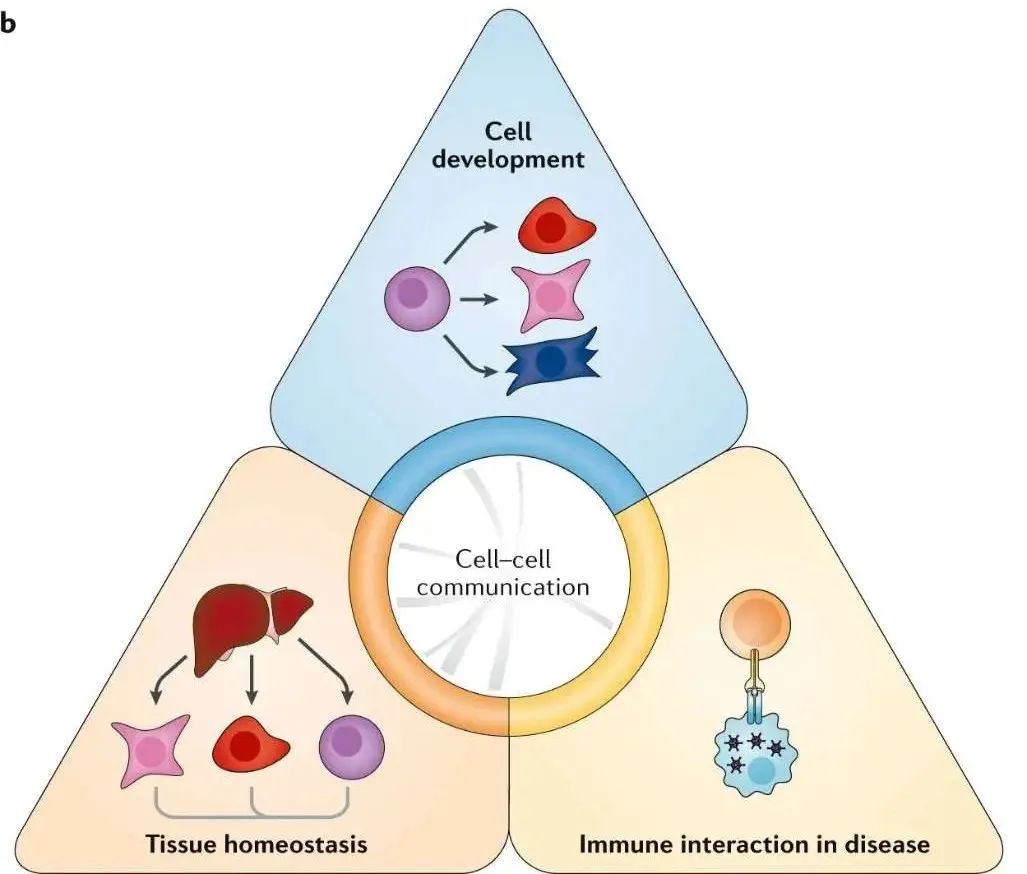
@Types and applications of cell–cell interactions and communication.
这些工具往往需要先把细胞聚好类(Cluster),计算的是各个Cluster之间的相互作用。那么,关于细胞间相互作用还有哪些尚未解决的问题呢?让我们对相互作用这个名词展开想象。相互作用就是彼此带来新的消息(信号转导级联),它应该不只发生在细胞亚群之间,在同一个Cluster之内的细胞是如何相互作用/通讯的?,类似问题也可以归纳以下需要考虑的几点:
- 通讯的是好消息还是坏消息,对自身或环境的影响,这通讯是欢呼还是求救?
- 同一细胞类型之内的通讯与不同细胞类型之间的通讯,有何差异?
- 基于基因表达的细胞通讯推断只是有通讯的可能性,而不代表实质发生
- 细胞相互作用/通讯在轨迹分化中的应用,亚群的相互作用与轨迹推断如何结合?
- 细胞如何感知细胞亚群数量的多少?
- 临近化学标记的应用
我相信这个列表还可以更长。讲细胞亚群内相互作用一个明确需要回答的问题是:T/B 细胞的克隆型,这些细胞是如何知道该克隆多少的?细胞是如何感知自己群落成员数量的呢?扩增到什么时候就不用扩增了呢?
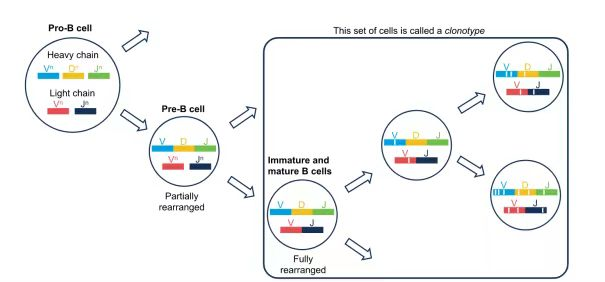
- How Do Cells Sense Their Environment?
- On being the right (cell) size
- Control of cell population sizes: When is enough enough?
在单细胞文章中我们经常看到表征细胞多少的柱形图/小提琴图,如果我们问:是什么决定了细胞的多少(cell population sizes)?作为一个细胞,它是如何在组织内感知同类细胞数量的?
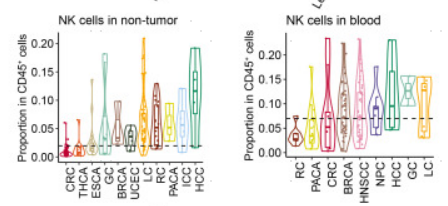
@A pan-cancer single-cell panorama of human natural killer cells
再比如,两个相邻Epithelial cell是如何相互通讯的(b)?构成组织的上皮细胞界面的寿命要长得多。这些界面是由间接与细胞骨架相关的蛋白质(E-cadherin和连接蛋白)之间的反式相互作用介导的。受体-细胞骨架连接提供了组织/器官的机械完整性,这必须在生物体的生命周期内始终保持。
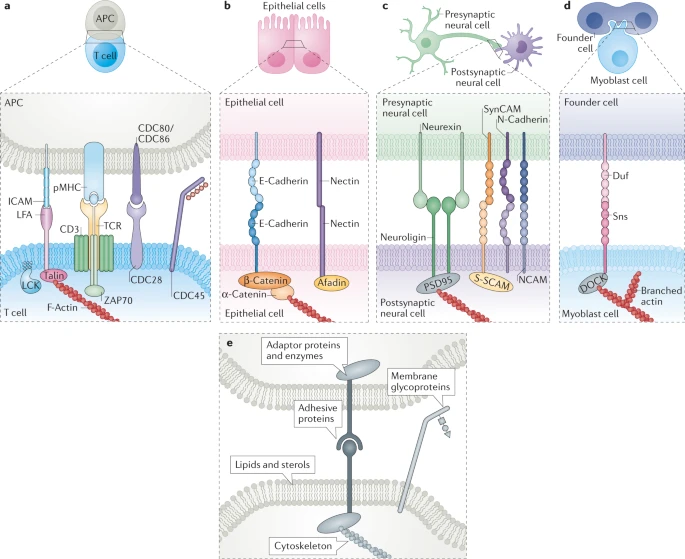
@Cell–cell interfaces as specialized compartments directing cell function
细胞亚群内部的通讯应该以协同为主,还是以竞争为主呢?他们之间是如何相互感知的?
[Deciphering cell–cell interactions and communication from gene expression](https://www.nature.com/articles/s41576-020-00292-x)
[Comparison of methods and resources for cell-cell communication inference from single-cell RNA-Seq data](https://www.nature.com/articles/s41467-022-30755-0)
[Cell–cell interfaces as specialized compartments directing cell function](https://www.nature.com/articles/s41580-020-00298-7)
[Evaluation of cell-cell interaction methods by integrating single-cell RNA sequencing data with spatial information](https://genomebiology.biomedcentral.com/articles/10.1186/s13059-022-02783-y)
[Strategies for monitoring cell–cell interactions](https://www.nature.com/articles/s41589-021-00790-x)
[InterCellar enables interactive analysis and exploration of cell−cell communication in single-cell transcriptomic data](https://www.nature.com/articles/s42003-021-02986-2)
[CellPhoneDB: inferring cell–cell communication from combined expression of multi-subunit ligand–receptor complexes](https://www.nature.com/articles/s41596-020-0292-x)
[Cell-cell interactions: How cells communicate with each other](https://www.khanacademy.org/test-prep/mcat/cells/cell-cell-interactions/a/cell-cell-interactions-how-cells-communicate-with-each-other)
[Determining cell type abundance and expression from bulk tissues with digital cytometry](https://www.nature.com/articles/s41587-019-0114-2)
[Cell type and gene expression deconvolution with BayesPrism enables Bayesian integrative analysis across bulk and single-cell RNA sequencing in oncology](https://www.nature.com/articles/s43018-022-00356-3#Abs1)
[What determines cell size?](https://bmcbiol.biomedcentral.com/articles/10.1186/1741-7007-10-101)
[On being the right (cell) size](https://www.science.org/doi/10.1126/science.1245075)
[Control of cell population sizes: When is enough enough?](https://www.unibas.ch/en/News-Events/News/Uni-Research/Control-of-cell-population-sizes--When-is-enough-enough-.html)
[Unit 4: How Do Cells Sense Their Environment?](https://www.nature.com/scitable/ebooks/essentials-of-cell-biology-14749010/how-do-cells-sense-their-environment-14751787/#:~:text=In%20single-celled%20organisms%2C%20signaling%20allows%20populations%20of%20cells,single%20cell%20could%20carry%20out%20on%20its%20own.)
[Microenvironmental sensing by fibroblasts controls macrophage population size](https://www.pnas.org/doi/10.1073/pnas.2205360119)
[A pan-cancer single-cell panorama of human natural killer cells](https://www.cell.com/cell/fulltext/S0092-8674(23)00849-8?_returnURL=https%3A%2F%2Flinkinghub.elsevier.com%2Fretrieve%2Fpii%2FS0092867423008498%3Fshowall%3Dtrue)
/
